
Purulia, West Bengal, MGNREGS workers of Purulia talks to Businessline about their problems in non-payment. Photo Debasish Bhaduri | Photo Credit: Debasish Bhaduri
For the MGNREGA labourers in KG Kandigai in Tiruvallur district in Tamil Nadu, the routine was the same for 100 days every year. They would wrap up their household chores in the morning, send their children to school and reach their job site by 9.30 am, where their Mahatma Gandhi National Rural Employment Guarantee Act mate or supervisor marks their attendance. They would work in the morning, break for lunch and restart their work, only to wrap up and leave by evening.
But they say that their routine has altered since the beginning of 2023. “We have been asked to come to the sites by 7.30 am by the supervisors, to mark our attendance,” says Yaagavalli, a worker.
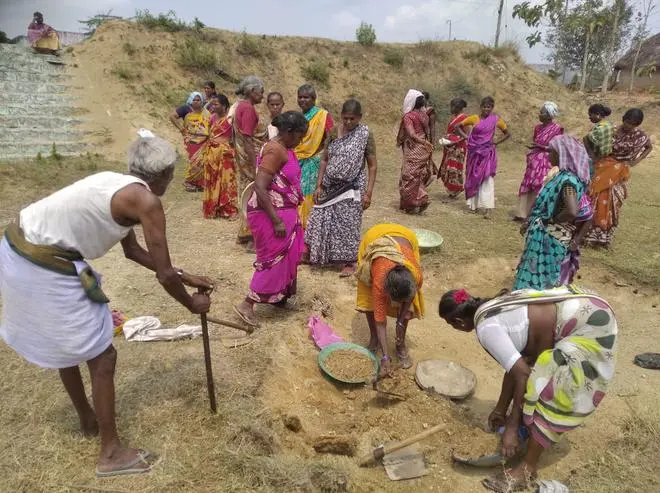
MGNREGA workers in KG Kandigai digging a pond
Since the beginning of January 2023, the Ministry of Rural Development had made it mandatory for them to get their attendance marked via the National Mobile Monitoring System (NMMS) App. The intention of the app is to usher in greater transparency and weed out alleged malpractices associated with the the process involving the attendance of genuine beneficiaries under MGNREGA.
Visits to MGNREGA sites by businessline revealed that the reaction to the app is mixed across the country with several teething troubles seen in the initial months.
The working of the app, as explained by Roopa, a site supervisor, is quite simple. The supervisors have to download the app on their smartphones and have to take geo-tagged images of workers twice a day - in the morning and in the afternoon and upload it on the server. Attendance gets marked based on the app-based photographs.
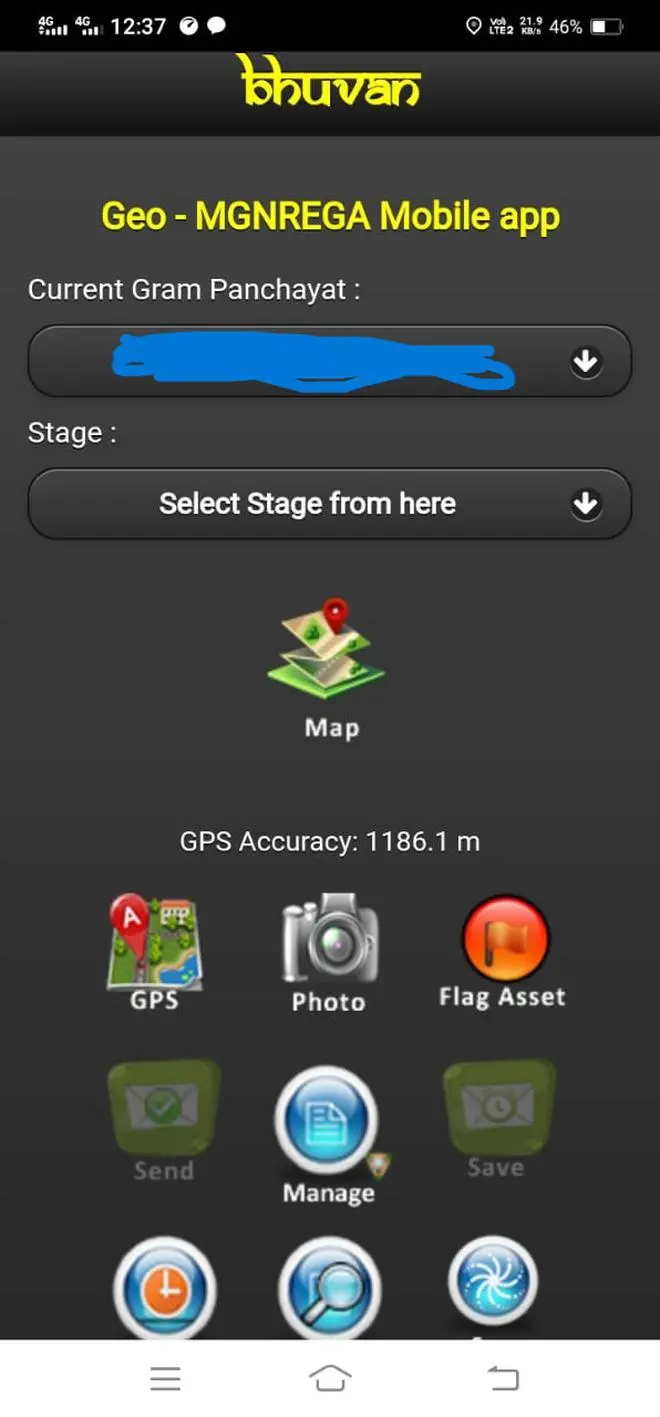
The NMMS app is used to mark attendance
While this looks simple on paper, the workers and site supervisors have a different story to tell. “Previously, the workers and I would come to the site by 9 am. While they would start the work, I would fill the muster rolls. But now, we have to take a series of photographs and that is quite time-consuming. So, all of us try to come to the site between 7 and 7.30 in the morning. We send the workers who come late back home because they would miss the day’s attendance anyway,” says Roopa.
“It takes us a while to upload all these images together, owing to the bad network connectivity. Also, my phone hangs most of the time.” The network connectivity in the village remained quite poor throughout that day. Roopa and two other supervisors said that they bought a smartphone only around the time that the app was introduced, after taking a loan from self-help groups.
Data from the MGNREGA portal from April 6, 2023, shows that just 56.3 per cent of the total gram panchayats in the country currently use the app to mark the workers’ attendance. This trend is different across states. While in Kerala and Tamil Nadu, 97 and 92 per cent of the total panchayats have started using the app to mark attendance, none in Goa uses it. In West Bengal, only eight out of 3,339 panchayats use it.

The app is just one of the problems for the MGNREGA labourers of the Eastern State. The scheme proved to be a lifeline for hundreds of men and women particularly in districts like Purulia where agriculture can prove to be difficult due to the terrain and shortage of water. But villagers say that the last time they managed to get some work was in 2021, for which they still have not received the payment ever since the Central government stopped releasing funds under Section 27 MGNREGA to the State citing misappropriation and other irregularities. As of March 2023, the wage liability of the Centre to West Bengal alone is ₹2,763 crore.

The news of the introduction of the app has left a lot of West Bengal’s MGNREGA labourers concerned. “ Already under the existing scheme, there have been times when we have lost out money because the supervisor says that the quality standard was not adhered to. I do not know what will happen if our photographs do not get properly uploaded,” said Apurbo Mahato, a labourer from Lalpur village.
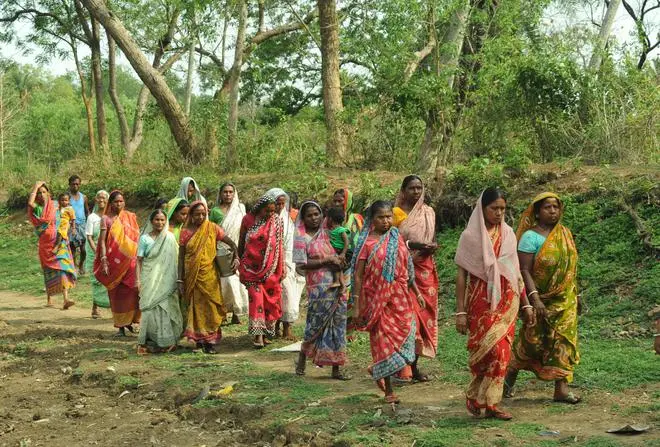
Purulia, West Bengal, MGNREGS workers of Purulia talks to Businessline about their problems in non-payment. Photo Debasish Bhaduri | Photo Credit: Debasish Bhaduri
A few random images uploaded via the NMMS app that businessline accessed looked quite blurry. Only some of them had clear images of workers. In fact, some images showed tiled floors and concreted roads and had no human face at all.
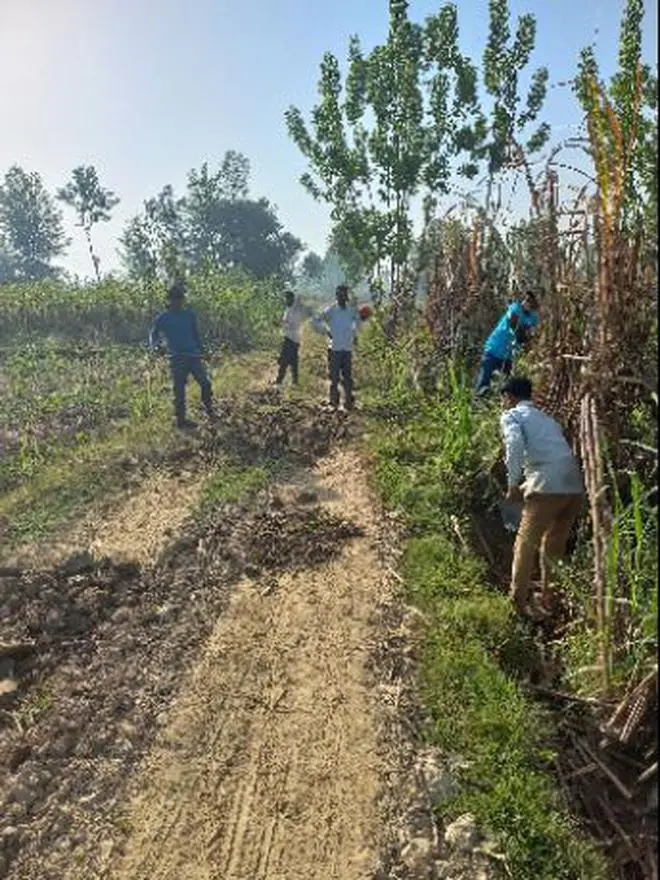
An NMMS app image that was accessed from the website
Salim Aroosa, a supervisor in the Khairipihira village, shared another worry. “Sometimes, it may happen that a worker may feel sick or unwell midway through his work and may have to go home. In such cases, we usually mark them present so that they do not lose out on wages. However, under this new system, this may not be possible,” he said. Roopa also noted this.
But not all workers are unhappy with the app. For instance, the workers of Vadlakonda village in the Janagaon district of Telangana say that the app hasn’t affected their routine at all. At the same time, D Lakpati, a supervisor in Kundaram village said that he faces delays in marking attendance at times. “I hope this is addressed,’‘ he said.
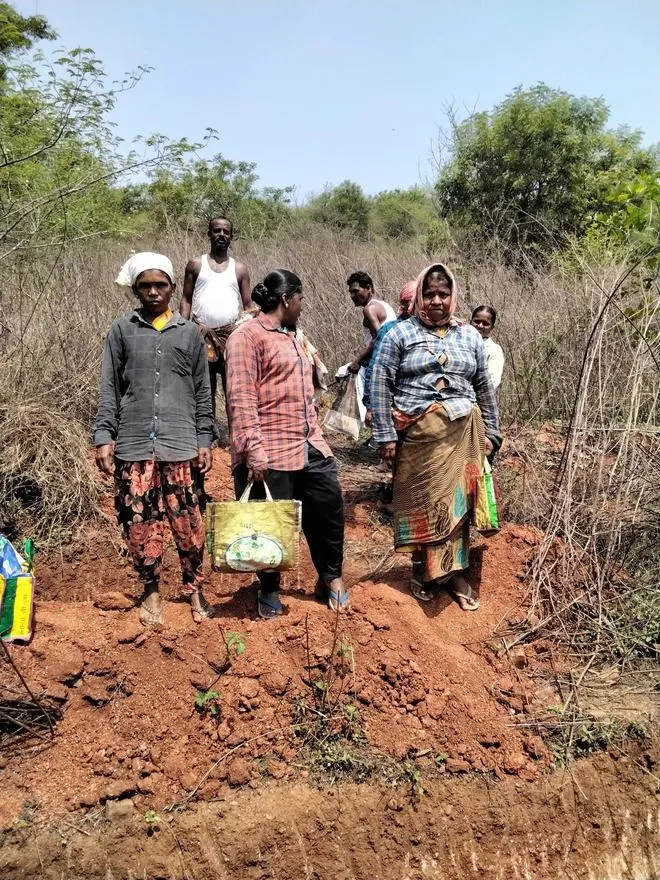
Workers at Yana Cheruvu, off Vadlakonda village, Janagaon district, Telangana | Photo Credit: G Naga Sridhar
Authorities in Gujarat’s Mehsana district say that they have ensured that the implementation of the app remains hassle-free and effective. An official from the District Rural Development Agency said that the experience by and large has been smooth barring instances of internet failure and technical glitches.
At the same time, Ashok Shrimali, a social activist from Ahmedabad flagged a few other issues. “The app causes friction between workers and supervisors. In some other instances, the supervisors were seen asking for money in exchange for regularising attendance. Workers have no option but to accept this,” he said.
The issues that the workers and supervisors shared with businessline were also in line with the report of a parliamentary standing committee on Rural Development and Panchayati Raj. “The entire exercise of capturing two real-time photographs in a day hinges upon a few key factors such as the availability of smartphones, proper internet connectivity and the presence of MGNREGA workers on both stipulated times for proverbial ‘in’ and ‘out’ attendance,” the report reads.
“Expecting the MGNREGA workers to be well versed with the functioning and language of the app or for that matter even depending upon a nodal human intervention perhaps adds to their woes. Moreover, often the fluid timings of the work site necessitate the workers to keep on waiting there even after the completion of work for their image capturing,” it adds.
However, it notes that the intention behind the introduction of the app isn’t malicious and intended to usher greater transparency which can come after some initial teething troubles.
Published on April 14, 2023

Comments
Comments have to be in English, and in full sentences. They cannot be abusive or personal. Please abide by our community guidelines for posting your comments.
We have migrated to a new commenting platform. If you are already a registered user of TheHindu Businessline and logged in, you may continue to engage with our articles. If you do not have an account please register and login to post comments. Users can access their older comments by logging into their accounts on Vuukle.